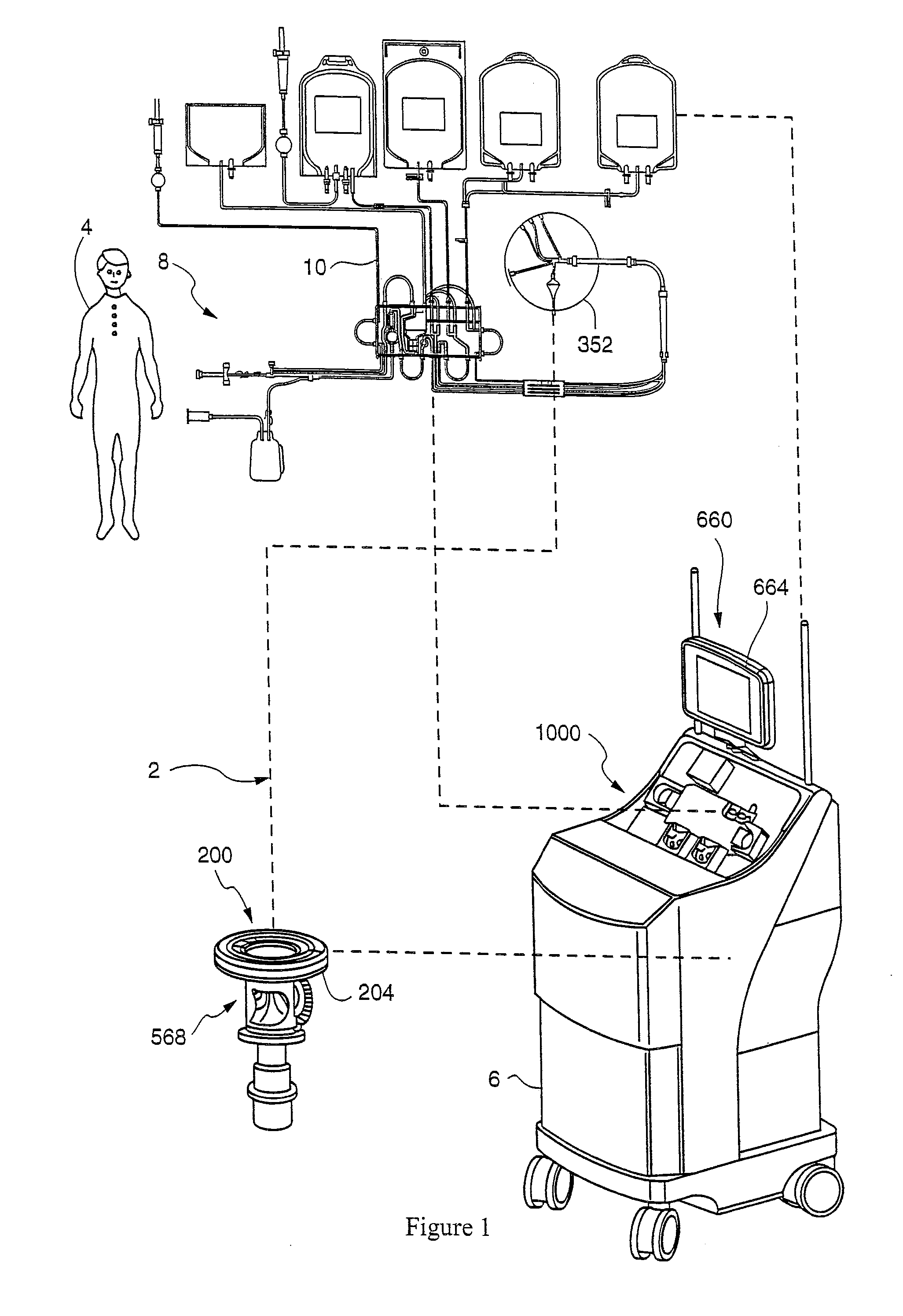Platelet Additive Solution For Leukoreducing White Blood Cells In Apheresed Platelets
a platelet additive and white blood cell technology, applied in the field of platelet additive solution for leukoreducing white blood cell in apheresed platelets, can solve the problems of inability to separate all white blood cell from platelets, ineffective use of porous filter, and ineffective use of conventional porous filter, etc., to achieve the effect of reducing residual white blood cells
- Summary
- Abstract
- Description
- Claims
- Application Information
AI Technical Summary
Benefits of technology
Problems solved by technology
Method used
Image
Examples
example 1
[0092]A single hyperconcentrated platelet product was collected on the TRIMA apheresis machine 6, purified in chamber 67, and stored in platelet bag 84. The content of platelet bag 84 was divided into 7 small (50 mL) bags. Plasma or the following constituents were added to each small bag (the platelets included a 37.5% plasma carryover): saline, saline+Mg2+, SSP+, Isolyte S, Isolyte S+Citrate and Isolyte S−Mg2+. The concentrations of Mg2+ or citrate added were comparable to what is found in current PAS solutions (see Table 1 below). The primary differences between Isolyte S and the below listed PAS solutions are that Isolyte S lacks citrate and contains twice the amount of magnesium. Note: Plasmalyte A has the same constituents as Isolyte S, it merely has a different manufacturer.
[0093]Residual WBC (rWBC) samples were taken and measured at approximately 2 hour intervals for 4 hours and then again on Day 1 (after overnight storage on a flatbed rotator). The initial (T0) time point wa...
example 2
[0105]This study looked at the effects of platelet additive solution containing moderate amounts of magnesium on residual white blood cells contained in hyperconcentrated platelet products. Hyperconcentrated platelet products are platelets which are collected at a high enough concentration that they require dilution in a storage solution. A concentration greater than or equal to 2100×103 / μl is considered a hyperconcentrated platelet product. Because of the lack of plasma in a hyperconcentrated platelet product, platelet quality degrades after 48 hours of storage. Therefore, hyperconcentrated platelets must be diluted in a platelet additive solution to allow for seven days of storage.
[0106]Table 2 shows rWBC data for paired hyperconcentrated platelet products collected on the Trima Accel System. The first column represents rWBC counts for individual platelet products before addition of a platelet storage solution containing moderate amounts of magnesium; the second column represents ...
example 3
[0107]One hypothesis for the unexpected results using an additive solution containing moderate amounts of magnesium as a platelet additive solution is that the population of WBC that escapes the saturated fluidized particle bed in chamber 67 or a leukoreduction filter media, are not representative of the WBC population as a whole. In order to escape the saturated fluidized particle bed in the chamber 67 and leukoreduction media, this subpopulation of WBC may be smaller and less dense than the average WBC. Internal studies have shown that WBCs carried over in standard platelet products are enriched in B lymphocytes. 39% of the WBCs found in platelets apheresed using a Trima apheresis machine are B lymphocytes, as compared to the 3.3% found in whole blood. Moreover, lymphocytes make up 28% of WBC in whole blood but make up 98% of WBC found in platelets separated using the Trima apheresis system. This smaller, denser subpopulation of WBCs from apheresed blood may be more sensitive to t...
PUM
 Login to View More
Login to View More Abstract
Description
Claims
Application Information
 Login to View More
Login to View More - R&D
- Intellectual Property
- Life Sciences
- Materials
- Tech Scout
- Unparalleled Data Quality
- Higher Quality Content
- 60% Fewer Hallucinations
Browse by: Latest US Patents, China's latest patents, Technical Efficacy Thesaurus, Application Domain, Technology Topic, Popular Technical Reports.
© 2025 PatSnap. All rights reserved.Legal|Privacy policy|Modern Slavery Act Transparency Statement|Sitemap|About US| Contact US: help@patsnap.com



